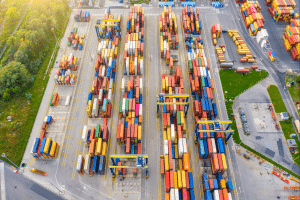Carbon Mapper has made enhancements to the Carbon Mapper Data Portal which now features new data on global sources of methane plus improved functionality to make this data more accessible and actionable.
The company’s mission is to fill gaps in the emerging global ecosystem of methane and CO2 monitoring systems by delivering data at facility scale that is precise, timely, and accessible to empower science-based decision making and action. Improving the quantity and usability of the data, is made free and open to the public, is foundational to the organisation’s mission.
According to United Nations Environment Programme, methane is 80 times more harmful than CO2 for 20 years after it is released. It has more power to warm up the climate than CO2. To meet the Paris Agreement’s goal of limiting global temperature from rising by 1.5 degree c by 2030, methane emissions have to be cut down by 45%.
Due to lack of technology to quantify the amount of methane emissions, it was difficult to keep a check on rising temperature. With Carbon Mapper Data Portal, it will be easy for nations and companies to monitor daily emissions and work on cutting down the leakages.
New Global Data

For the first time, Carbon Mapper offers data from multiple sensors on high emission point sources of methane from many countries and sectors around the globe.
The portal now displays nearly 9,000 methane plumes observed by Carbon Mapper airborne surveys of key regions in Latin America, the US and Canada, as well as global observations by NASA JPL’s Earth Surface Mineral Dust Source Investigation (EMIT) instrument onboard the International Space Station.
This expansion of Carbon Mapper’s platform demonstrates how a “tiered observing system” (integrating data from multiple remote sensing technologies) can help advance global understanding of methane and improve emissions identification, quantification, and ultimately reduction.
“We’re applying lessons from over a decade of field research to routinely integrate data from multiple observing systems to detect and quantify methane emissions at the level of individual facilities. Making methane point source emissions data transparent and freely available is one of Carbon Mapper’s contributions to the expanding global ecosystem of monitoring and mitigation programs. This also helps set the stage for the pending operational scale-up of these data sets using the satellites being developed in partnership with NASA JPL and Planet Labs PBC,” said Riley Duren, Carbon Mapper CEO.
Need for this technology

Methane leaks amount to 30% of global warming that is manmade, according to scientists. Even though EO satellites, ground sensors, and planes and drones, equipped with infrared cameras are capable of monitoring for any methane leaks yet technology for precise methane measurements was still not available.
Under the Biden’s administration’s Inflation Reduction Act which was passed into law in 2022 states that companies must start producing precise measurements of their methane emissions by 2023 and are likely to be fined if they exceed permissible limits. However, due to lack of any technology that could detect the precise quantity of methane emissions, the emissions were not under check.
Climate scientists and environmentalists were hopeful about the administration’s effort but unless there are technologies to measure continuously the methane emissions, there won’t be any effort to reduce the leaks and keep the earth’s temperature from rising.
Enhanced functionality
Data Portal users may notice some immediate differences — from the base map to the plume images themselves (now with an improved look and color scheme that more clearly defines different methane concentrations). Moreover, added capabilities make Carbon Mapper emissions data more accessible for different groups applying it in various ways. For example, users can now search for plumes by sector, date, or emissions rate. Plus, we’ve added a new bulk download feature that allows select users to request full datasets.
Additional portal enhancements include:
- A new look and color scheme for our methane plume visualizations that make it easier to see concentration gradients
- Attribution of observed plumes to major emission sectors
- Individual or bulk plume downloads
- Ability to filter and sort plumes by observation date or emission rate
- Flexible map search using Mapbox map view and list view toggle
- Ability to view a plume’s location in Google Maps
- Area coverage and plume layer toggles (which allow users to see where observations were made)
- Information on the observational source of each plume (i.e., which instrument provided the data)
- Faster and more interactive application performance
Limiting Methane emissions
By using satellite data and aerial surveys, scientists have studied and concluded that nations and companies are emitting double or triple the amount of methane than they are reporting.
“The past three years have been the fastest-growing years on record in terms of methane emissions, which is kind of scary,” said Daniel Jacob, a leading climate scientist at Harvard University, reports AP. “It’s absolutely critical because ultimately, from the standpoint of evading climate change, you want to stop methane from increasing and you want it to start decreasing.”
“If we can collectively get our act together over the next eight years and dramatically slash methane emissions around the planet, we still have a chance as a society to get our arms around the larger climate problem and avoid the worst impacts,” said Duren.
ALSO READ: Mapping, Calculating, and Controlling Carbon Emissions









